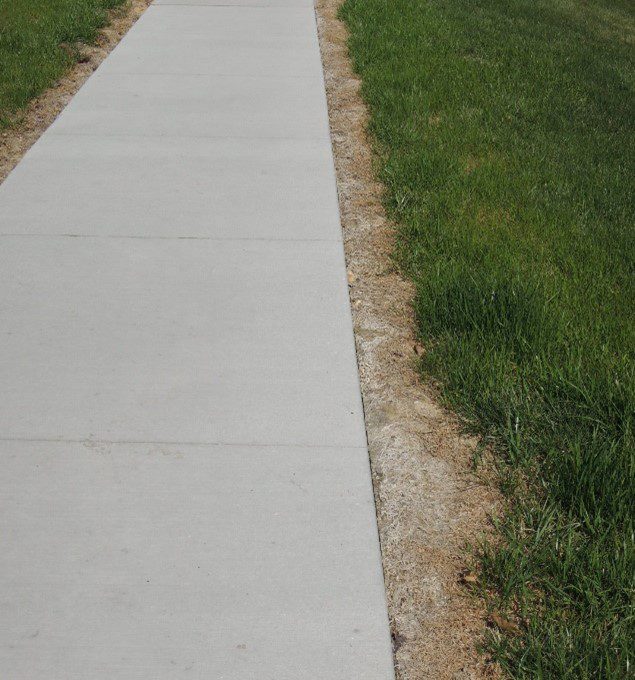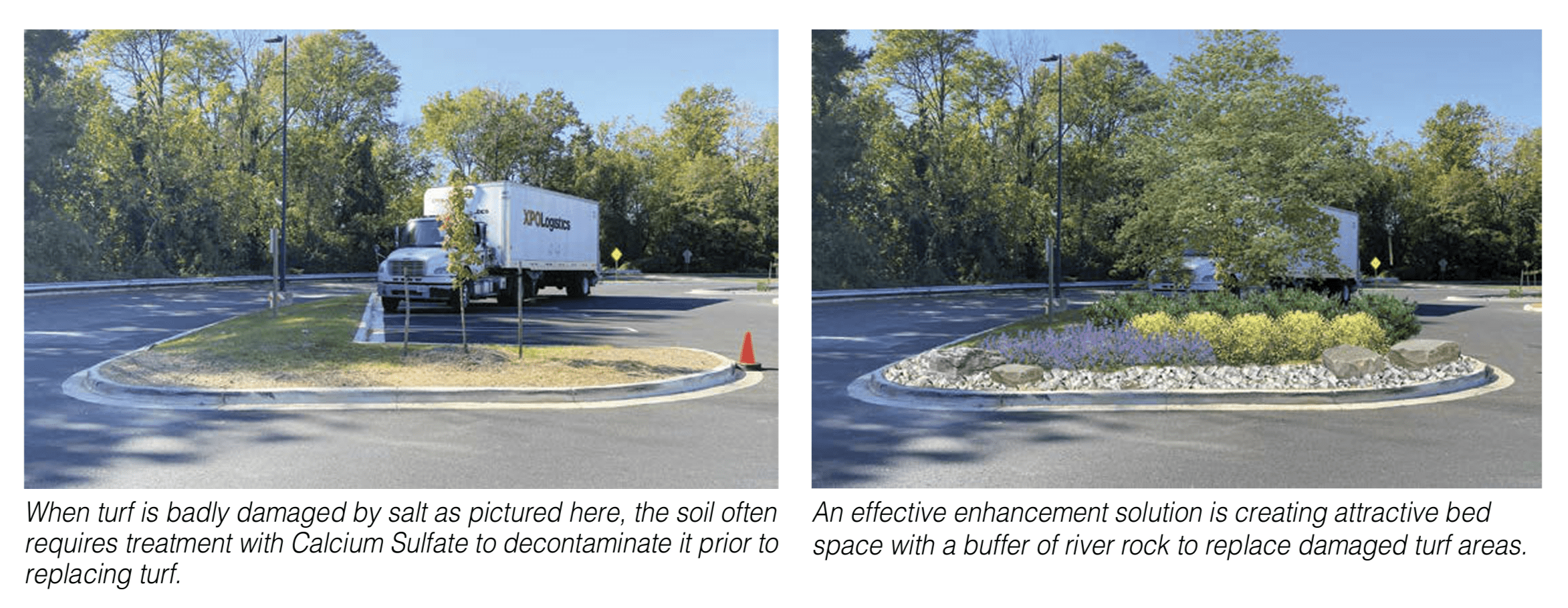By Joe Ketterer, Director of Quality & Efficiency
 The good news is that spring is just around the corner. The bad news is that turf and ornamental plant bed damage associated with snow and ice removal operations is becoming more visible as the piles of snow melt away. The first six weeks of 2022 alone have been exceptionally icy, cold and snowy when compared to the past couple of years, which means we can expect to see much more salt damage as we enter spring.
The good news is that spring is just around the corner. The bad news is that turf and ornamental plant bed damage associated with snow and ice removal operations is becoming more visible as the piles of snow melt away. The first six weeks of 2022 alone have been exceptionally icy, cold and snowy when compared to the past couple of years, which means we can expect to see much more salt damage as we enter spring.
 First, let’s take a step back and look at what preventative measures could have been taken to avoid this outcome, so that we can keep them in mind for next year:
First, let’s take a step back and look at what preventative measures could have been taken to avoid this outcome, so that we can keep them in mind for next year:
- Placing the appropriate amount of snow stakes in strategic locations around the property to help mark where asphalt and concrete meets the turf or mulch beds. If a property is properly staked and the property manager and snow contractor meet ahead of time to create maps as to where snow should be placed, we can keep the amount of damage to concrete, turf, and ornamental beds to a minimum.
- Applying a Calcium Sulfate (gypsum) preventative soil treatment (e.g. Verde-Cal or SoluCal). When applied as a pre-treatment before the first freeze of the year, this application can reduce the damaging effects of salt build-up in the soil that can burn plant roots and cause necrosis and possible death to green plant tissue.
That said, what can we do moving forward as the weather improves and we begin the process of cleaning up and preparing for the growing season? Well, the first step is to take a look at the language in your snow contract to determine who is responsible for damages. For our clients who have a snow removal contract with Ruppert, we will usually repair damages and offer solutions for adversely affected plant material. Damage to trees, shrubs and turf is unsightly and reinforces the need to have and understand the reasons why Ruppert has provisions in their snow contracts to help minimize this damage. For those who do not have a snow contract with us but need help repairing damage caused by another contractor, we offer enhancement services (time & materials) to remediate the damage.

Sometimes, plants can be pruned and may recover depending on the extent of the damage and the species of the plant involved. Others may be damaged to the extent that it would be best removed entirely and replaced. Our first task is to clean up and remove all the damaged pieces of concrete, turf, trees, and shrubs and then make additional proposals for repairs and replacements. Then, before replanting new turf or ornamentals (including flowers), we would quote a curative application of Calcium Sulfate to help treat the soil and release the salt that is bound to the soil colloids. We then can typically rely on a certain amount of natural rainfall to help flush the salt away so that we don’t make the common mistake of putting new plants into contaminated soil. At this point we have properly prepared the previously contaminated soil for either new sod or seed and replacement plant material. In particularly difficult locations where it doesn’t make sense to replace the turf, we may suggest replacing with river stone.
If your property has endured extensive snow/salt damage, contact your Ruppert Area Manager for professional recommendations on how to take care of existing damage and innovative ideas on how to minimize damage next year.